Onions, numbering more than 900 species in nature, are cultivated by almost all summer residents and gardeners. The culture has gained popularity with its wonderful aroma and rich taste. Planting onions before winter is similar to planting winter garlic, but has some features that you should know for a successful result.
Material Content:
The best varieties of winter onions
The stores offer a wide range of different varieties of winter onions, differing in taste and ripening.
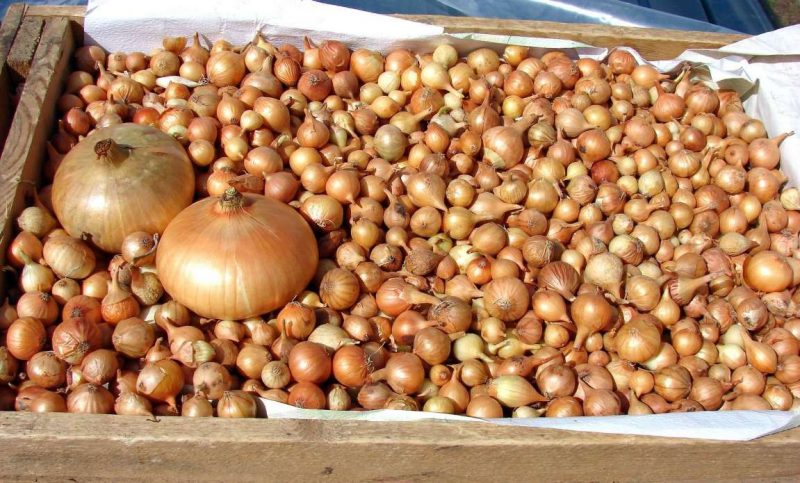
Among the most popular are:
- "Black Prince" is a mid-season variety that has become the result of the work of Russian breeders, with peninsular notes in taste. Dark violet bulbs are suitable for long-term storage.
- "Danilovsky" - a variety represented by flat onions with juicy light purple pulp, is resistant to peronosporosis.
- "Robin" - a hybrid bred for the southern regions, has a rich red color, excellent drought tolerance and productivity.
- "Sturon" is a disease-resistant and rifle-resistant variety with yellow husked bulbs that have white, juicy pulp.
- “Lugansk” is a late-ripening variety represented by flat onions with a sharp taste.
- "Buran" is a universal variety with a stable yield and yellow-brown bulbs weighing 110 g. Of the shortcomings, susceptibility to defeat by peronosporosis stands out.
- "Radar" - a Dutch variety resistant to frost and harmful organisms, is characterized by large fruits, which, if grown correctly, can reach a mass of 300-400 g.
Choosing a site for planting onions in the winter

For the full development of onions and obtaining a high yield before planting onions, it is necessary to choose the right site:
- Predecessors - When choosing a place, special attention should be paid to the cultures that were cultivated on it last season. Unacceptable predecessors, after which planting onion sets are not recommended, are potatoes, parsley, alfalfa, celery and beans.
- Lighting - photophilous plant loves sunny areas, protected from the wind by tall plants.
- Priming - Onions demonstrate the best productivity on fertile loams with good drainage. The soil for planting is prepared in advance by making ½ buckets of humus and 25 g of azofoska per 1 m2 for digging.
Planting deadlines
Planting onions in the fall is carried out at certain times, the calculation of which must be approached carefully. Too early planting can lead to the appearance of sprouts, and a late one, on the contrary, can cause underdevelopment of the roots and freezing of the seeds.

In areas with a mild climate, as a rule, landing is carried out in late October-early November, when a month is left before the onset of severe cold weather. In other regions, it is recommended to monitor the values of the outdoor thermometer: after setting the temperature at 5 ° C, it is necessary to start planting.
Schemes and technologies for planting onion sets
Before planting, planting material is prepared by calibrating for oatmeal (with bulb diameter less than 1 cm), onion set (from 1 to 3 cm) and sample (large bulbs with a diameter of more than 3 cm), which is later set aside until spring for forcing juicy greens.
- After sorting the planting material, you can start the main work:
- The excavated area is leveled, after which grooves of 5 cm depth and a distance of 20 cm are made on it.
- Dry planting material is laid out along the grooves while maintaining an interval between bulbs of 5-7 cm.
- Sevc is covered with a layer of soil that is slightly compacted.
- In the absence of precipitation, a slight moistening of the beds is carried out 10 days after planting.
- With the onset of frost, the plot is mulched with dry foliage, needles or covered with fir spruce branches.
When the onion planted before winter emerges
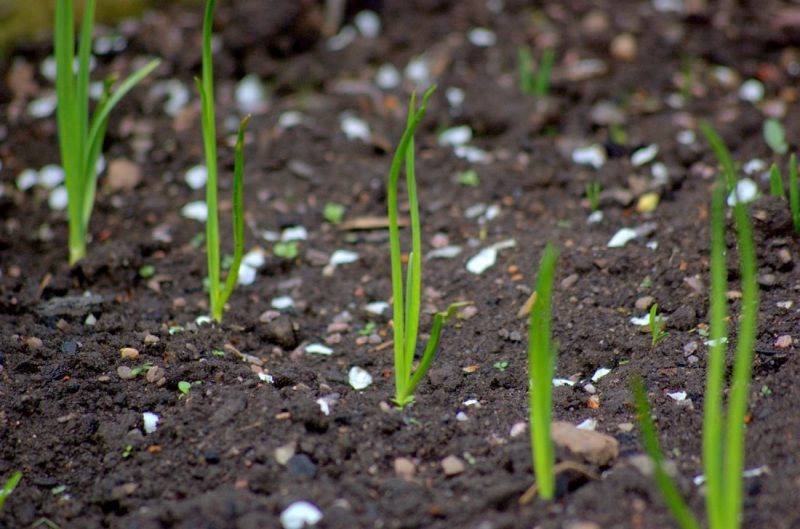
Under favorable weather conditions, friendly shoots of winter onions appear in late March, when the earth warms up enough, which makes it possible to get a crop 30 days earlier than during spring planting.
Onion Care Features
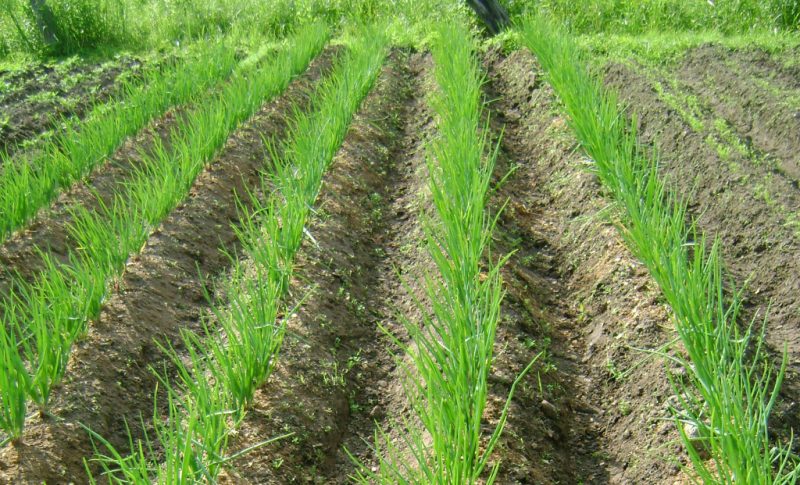
It is simple to take care of the beds with onions, it is enough to know the nuances of the development of culture and carry out the basic agricultural technical measures for cultivation.
Emergence of seedlings
To speed up the process of emergence of sprouts, it is recommended to remove the shelter from the site with the descent of snow, freeing the access of sunlight to the garden.
Loosening and thinning

After precipitation and irrigation, the soil should be loosened, while removing weed vegetation. After the formation of 3-4 leaves with thickened plantings, it is recommended to break through them, and use the resulting green mass for food.
How to feed onions
When the covering material and the mulch are removed, wood ash is scattered across the site at the rate of 10 g per 1 m2.The emergence of the fourth leaf shoots indicates the beginning of the formation of the bulb and the need for a full top dressing. Onions respond well to azofoska, made at the rate of 20-25 g per 1 m2, as well as to organic fertilizers in the form of a solution of chicken droppings.
Watering
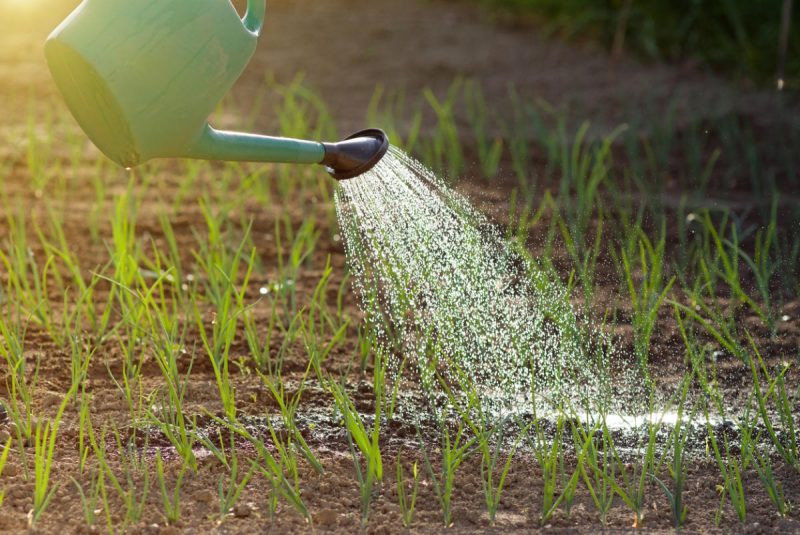
If winter was snowy, and rainfall in spring, then onions are watered quite rarely. In drought conditions, the frequency of humidification will have to be increased to once a week.
Protection against diseases and pests
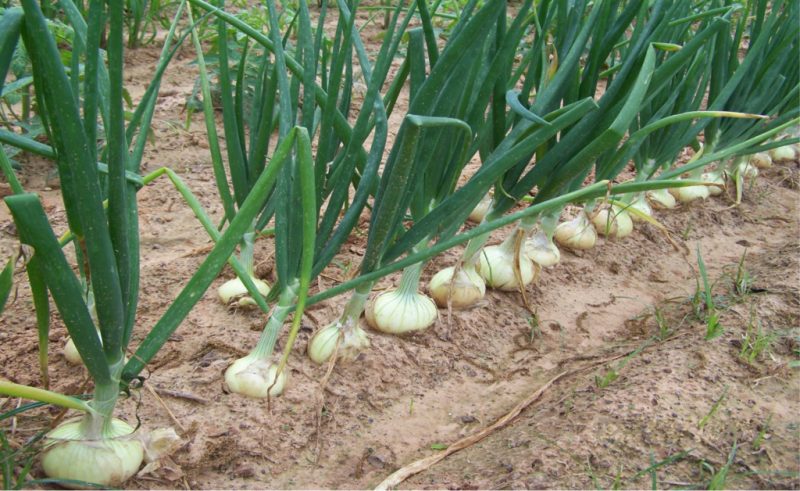
Onion plantings can be affected by the following harmful organisms:
- Onion fly - when identifying an insect common in the culture, an insecticidal solution should be used that quickly and effectively minimizes the expected damage from the life of the pest.
- Tobacco Onion Thrips - A common pest on vegetable crops that can also attack onion beds. An insecticide is used to destroy the colonies of a harmful insect.
- Neck rot - a disease whose pathogens are stored on planting material develops before harvesting. In order to prevent this situation, it is recommended to use only high-quality onion sets that do not have visible lesions of the disease.
- Peronosporosis - a fungal disease, the peak, the development of which is observed with a wet spring-summer period, affects onions at all stages of development and can lead to the death of the plant in the absence of protective measures. In order to prevent large crop losses, at the first sign of a flower bed, they are immediately sprayed with a fungicide solution according to the manufacturer's instructions on the packaging.
Advantages and disadvantages of autumn onion planting
Autumn planting of onions, like other crops, has its pros and cons.
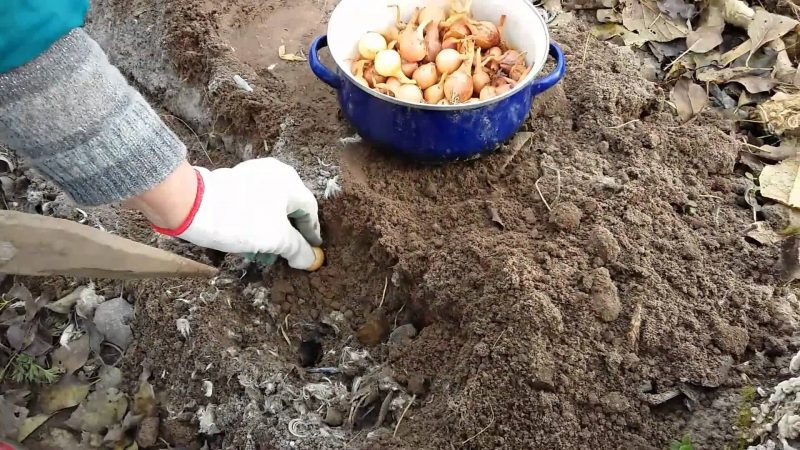
Indisputable advantages include the following:
- Early Harvest - planting winter onions makes it possible to use ripened fruits 20-30 days earlier than those that will be obtained with the spring method of planting. And if you build a greenhouse over the beds, then the period can move another 10 days.
- High-quality fruits - due to the passage of natural selection in wintering conditions in the open ground, the gardener receives only a healthy crop.
- The absence of a large spectrum of pests on the crop - cruciferous fleas, carrot flies and other insects that damage the seedlings of early crops are not observed on winter onions due to the very early appearance of sprouts.
- Fewer weeding - weeds are not able to compete with the early shoots of onions, which in the first stages of development do not need weeding due to the complete absence of weed vegetation.
- The presence of a sufficient amount of natural moisture - the depletion of the snow cover replenishes the reserves of soil moisture, which may not be enough for the formation of bulbs planted in the spring.
The main disadvantage of onion planting in the fall is the difficulty in determining the optimal timing for work taking into account various agro-climatic zones. In particular, this is a big drawback for beginning gardeners who, fearing that the onions will go off in the winter at the seedling stage, plant sowing at the end of November, when the bulbs freeze out before they take root.
Thus, if the desire of the gardener is to obtain consistently high yields of quality bulbs, then it is worth giving preference to winter planting of a crop, which has a number of significant advantages compared to spring.












